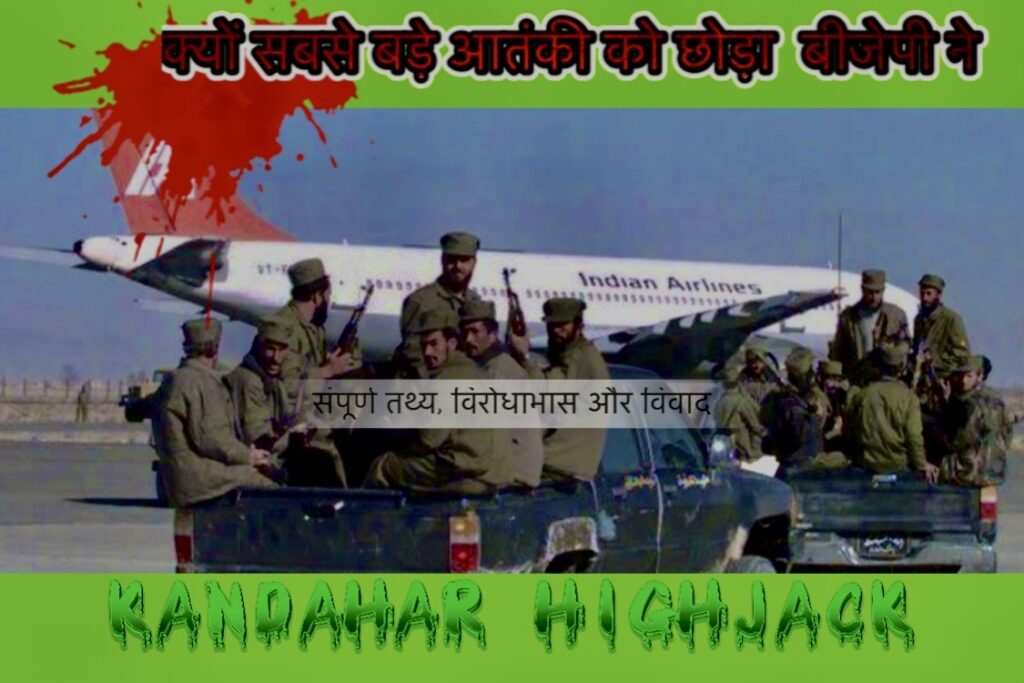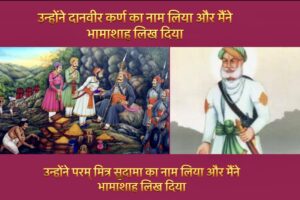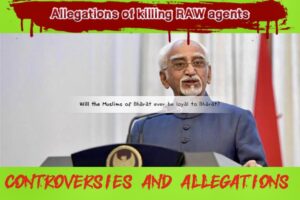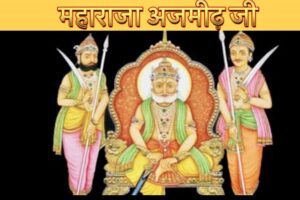Kandahar Hijack (IC-814)

कांधार हाईजैक (IC-814)
संपूर्ण तथ्य, विरोधाभास और विवाद घटना का विवरण
तारीख-24 दिसंबर 1999
सरकार- 24 दिसंबर 1999 के समय भारत में अटल बिहारी वाजपेयी के नेतृत्व में भारतीय जनता पार्टी (BJP) की सरकार थी।
गृह मंत्री- लाल कृष्ण आडवाणी
रक्षा मंत्री- जॉर्ज फ़र्नांडीस
विदेश मंत्री – जसवंत सिंह
विमान- इंडियन एयरलाइंस की फ्लाइट IC-814
रूट- काठमांडू (नेपाल) से नई दिल्ली (भारत)
यात्रियों की संख्या-176 यात्री (24 क्रू सहित)
हाईजैकर्स की संख्या- 5 सशस्त्र आतंकवादी
हाईजैकर्स की मांग- तीन आतंकवादियों की रिहाई – मौलाना मसूद अज़हर, अहमद उमर सईद शेख, और मुश्ताक अहमद ज़रगर।
स्थानों पर विमान की लैंडिंग- अमृतसर (भारत) लाहौर (पाकिस्तान) दुबई (संयुक्त अरब अमीरात) – यहाँ पर 27 यात्री रिहा किए गए।
अंतिम गंतव्य – कांधार, अफगानिस्तान (तालिबान नियंत्रित क्षेत्र)
मुख्य विरोधाभास और विवाद-
आतंकवादियों के साथ समझौता
भारतीय सरकार को यात्रियों की सुरक्षा के लिए आतंकवादियों की मांग माननी पड़ी, जिससे तीन बड़े आतंकवादियों को रिहा किया गया। इसका भविष्य में आतंकवाद की बढ़ती घटनाओं से सीधा संबंध बना। मौलाना मसूद अज़हर ने रिहाई के बाद जैश-ए-मोहम्मद नामक आतंकी संगठन की स्थापना की, जिसने भारतीय संसद पर हमले (2001) और पुलवामा (2019) जैसे कई बड़े आतंकवादी हमलों को अंजाम दिया।
जसवंत सिंह का आतंकियों के साथ जाना
उस समय के विदेश मंत्री जसवंत सिंह ने स्वयं आतंकवादियों को कांधार ले जाकर सौंपा। यह निर्णय बहुत विवादास्पद बना, क्योंकि ऐसा पहली बार हुआ जब एक उच्च पदस्थ राजनेता ने सीधे आतंकियों के साथ बातचीत की और उनकी मांगों को पूरा करने के लिए खुद गए। विरोधाभास यह था कि जहां भारत आतंकवाद के खिलाफ कड़ा रुख रखता था, वहीं सरकार ने इस घटना में आतंकवादियों की मांग को मानते हुए उन्हें छोड़ दिया।
विमान को अमृतसर में रोके जाने में देरी
हाईजैक के बाद विमान को अमृतसर में लैंड कराया गया, लेकिन इसे रोकने और आतंकियों को घेरने में देरी हुई। यह देरी उस समय के सुरक्षा तंत्र की खामियों को उजागर करती है और इसे सरकार की एक बड़ी रणनीतिक विफलता माना गया। भारतीय सेना और सुरक्षा बल विमान को वहीं रोकने और हाईजैक खत्म करने की स्थिति में थे, लेकिन सही समय पर कार्रवाई नहीं हो पाई, जिससे आतंकियों को मौका मिला और वे विमान को लाहौर की ओर ले जाने में सफल रहे।
तालिबान की भूमिका- कांधार में उस समय तालिबान का नियंत्रण था। तालिबान ने सीधे तौर पर हाईजैकर्स का समर्थन तो नहीं किया, लेकिन उन्होंने भारत सरकार को कोई मदद नहीं दी। तालिबान सरकार ने यह कहते हुए खुद को अलग कर लिया कि वे इस घटना में मध्यस्थता नहीं करेंगे, जिससे भारत को और कठिनाइयों का सामना करना पड़ा।
मीडिया और जन भावना का दबाव-
मीडिया में लगातार हाईजैक की कवरेज और जनमानस में यात्रियों की सुरक्षा को लेकर बढ़ती चिंताओं के कारण सरकार पर भारी दबाव था। इस दबाव में सरकार ने आतंकवादियों की मांगें मानी, लेकिन बाद में इस पर काफी विवाद हुआ। आतंकियों की रिहाई के कारण यह विचारधारा बनी कि यह भविष्य में आतंकवादियों को प्रोत्साहित करने का काम करेगा, और भविष्य में ऐसी घटनाओं का खतरा बढ़ेगा।
समग्र स्थिति का विश्लेषण
आतंकवाद और सरकार की रणनीति
इस घटना ने भारत की आतंकवाद-रोधी नीति और सुरक्षा तंत्र की खामियों को उजागर किया। एक ओर, सरकार आतंकवादियों के साथ कोई समझौता नहीं करने की नीति अपनाती थी, लेकिन दूसरी ओर, यात्रियों की सुरक्षा के लिए उसे मजबूरी में आतंकवादियों को रिहा करना पड़ा।
मानव जीवन और राजनीतिक दबाव
विरोधाभास यह था कि सरकार ने यात्रियों की जान बचाने के लिए आतंकियों की मांगें मान लीं, लेकिन इसका परिणाम यह हुआ कि भविष्य में आतंकवादी हमलों में वृद्धि हुई। पुलवामा और संसद हमले जैसी घटनाओं के बाद यह निर्णय और विवादास्पद हो गया। दुर्घटना का दीर्घकालिक प्रभाव: इस घटना का भारतीय सुरक्षा नीति पर बड़ा प्रभाव पड़ा। इसके बाद आतंकवाद से निपटने के लिए भारत ने अपनी नीतियों को कड़ा किया और भविष्य में ऐसी घटनाओं से निपटने के लिए सुरक्षा तंत्र को और मजबूत किया।
निष्कर्ष
कांधार हाईजैक एक जटिल और विवादास्पद घटना थी, जिसमें आतंकवाद, राजनीति, सुरक्षा और मानव जीवन से जुड़े कई विरोधाभास थे। तत्कालीन सरकार को भारी आलोचना का सामना करना पड़ा, लेकिन इस घटना ने भारत की आतंकवाद-रोधी नीतियों में महत्वपूर्ण बदलाव किए।
Kandahar Hijack (IC-814)
Full Facts, Controversies and Details of the Kandahar Hijack (IC-814)
Incident Date- 24 December 1999
Government- On 24 December 1999, India was ruled by the Bharatiya Janata Party (BJP) government led by Atal Bihari Vajpayee.
Home Minister- Lal Krishna Advani
Defence Minister- George Fernandes
Foreign Minister- Jaswant Singh
Aircraft- Indian Airlines Flight IC-814
Route- Kathmandu (Nepal) to New Delhi (India)
Number of Passengers- 176 passengers (including 24 crew)
Number of Hijackers- 5 armed terrorists
Demand of Hijackers- Release of three terrorists – Maulana Masood Azhar, Ahmed Omar Saeed Sheikh, and Mushtaq Ahmed Zargar.
Landing Locations- Amritsar (India) Lahore (Pakistan) Dubai (United Arab Emirates) – 27 passengers were released here.
Final destination – Kandahar, Afghanistan (Taliban controlled area)
Main contradictions and controversies- Compromise with terrorists The Indian government had to agree to the demands of the terrorists for the safety of the passengers, thereby releasing three major terrorists. This had a direct connection with the increasing incidents of terrorism in the future. Maulana Masood Azhar, after his release, founded a terrorist organisation called Jaish-e-Mohammed, which carried out several major terrorist attacks like the attack on the Indian Parliament (2001) and Pulwama (2019).
Jaswant Singh’s going with the terrorists Jaswant Singh, the then foreign minister, himself took the terrorists to Kandahar and handed them over. This decision became very controversial, as this was the first time that a high-ranking politician directly negotiated with the terrorists and went himself to meet their demands. The paradox was that while India had a tough stand against terrorism, the government in this incident agreed to the demands of the terrorists and released them.
Delay in stopping the plane in Amritsar After the hijack, the plane was landed in Amritsar, but there was a delay in stopping it and surrounding the terrorists. This delay highlights the flaws in the security system of that time and was considered a major strategic failure of the government. The Indian Army and security forces were in a position to stop the plane there and end the hijack, but timely action was not taken, which gave the terrorists an opportunity and they were successful in taking the plane towards Lahore.
Role of Taliban
The Taliban had control in Kandahar at that time. The Taliban did not directly support the hijackers, but they did not provide any help to the Indian government. The Taliban government distanced itself saying that they would not mediate in this incident, due to which India had to face more difficulties.
Pressure of media and public sentiment
Due to continuous coverage of the hijack in the media and growing concerns about the safety of the passengers in the public mind, there was heavy pressure on the government. Under this pressure, the government accepted the demands of the terrorists, but later there was a lot of controversy over it. The release of terrorists led to the perception that it would encourage terrorists in the future, and the risk of such incidents in the future would increase.
Analysis of the overall situation
Terrorism and government strategy
This incident exposed the flaws in India’s anti-terrorism policy and security system. On the one hand, the government followed a policy of not making any compromise with the terrorists, but on the other hand, it was forced to release the terrorists for the safety of the passengers.
Human life and political pressure
The paradox was that the government accepted the demands of the terrorists to save the lives of the passengers, but the result was that terrorist attacks increased in the future. This decision became more controversial after incidents like Pulwama and Parliament attack.
Long-term impact of the accident
This incident had a major impact on Indian security policy. After this, India tightened its policies to deal with terrorism and further strengthened the security system to deal with such incidents in the future.
Conclusion
The Kandahar hijack was a complex and controversial incident, which had many contradictions related to terrorism, politics, security and human life. The then government faced heavy criticism, but the incident led to significant changes in India’s counter-terrorism policies.








Mating Press Hi there to all, for the reason that I am genuinely keen of reading this website’s post to be updated on a regular basis. It carries pleasant stuff.
GlobalBllog Awesome! Its genuinely remarkable post, I have got much clear idea regarding from this post . GlobalBllog
Jinx Manga This is my first time pay a quick visit at here and i am really happy to read everthing at one place
Lois Sasson Good post! We will be linking to this particularly great post on our site. Keep up the great writing
FinTechZoomUs I very delighted to find this internet site on bing, just what I was searching for as well saved to fav
Glue Dream strain You’re so awesome! I don’t believe I have read a single thing like that before. So great to find someone with some original thoughts on this topic. Really.. thank you for starting this up. This website is something that is needed on the internet, someone with a little originality!
Thank you ☺️
Blue Techker You’re so awesome! I don’t believe I have read a single thing like that before. So great to find someone with some original thoughts on this topic. Really.. thank you for starting this up. This website is something that is needed on the internet, someone with a little originality!
Hola, my friend! I’m overjoyed we could make time to catch up. Hi! Your website is a testament to a job well done in terms of design and content Battery recycle for financial returns Toodle-oo, and may your path be paved with kindness
Shalom, wise wanderer! I’m eager to learn from your experiences and insights. Looks like a valuable addition to your website Aluminium scrap sustainability initiatives
Catch you later, and may your path be guided by light
Altcoin news Are you looking to gain a competitive edge in the ever-evolving cryptocurrency market? Altcoin News is your go-to source for the latest updates, trends, and insights on alternative coins. With our expert analysis and comprehensive coverage, you’ll be well-equipped to make informed investment decisions. Don’t miss out on the next big opportunity!
https://t.me/cryptonetlake
Ciao, intriguing individual! I’m stoked to learn more about you, for real.
Browsing this site made me feel like I was wandering through the vibrant markets of Marrakech, where each vibrant detail enchants the senses and invites exploration. The rich colors and engaging storytelling mimic the exciting atmosphere of the city itself, making every visit a delightful experience. I’m thankful for the chance to express my views and I look forward to seeing your continued creativity shine through.
Come and share in the happiness of my website Local battery recycling buyback
Until next time, keep the faith burning bright
Play top games on 888Starz Pakistan and enjoy exclusive bonuses.
Noodlemagazine I like the efforts you have put in this, regards for all the great content.
Thank-you for your valuable feedback
Noodlemagazine There is definately a lot to find out about this subject. I like all the points you made
Noodlemagazine Hi there to all, for the reason that I am genuinely keen of reading this website’s post to be updated on a regular basis. It carries pleasant stuff.
YouJizz Very educational articles or reviews at this time
Noodlemagazine Very insightful articles and reviews at the moment